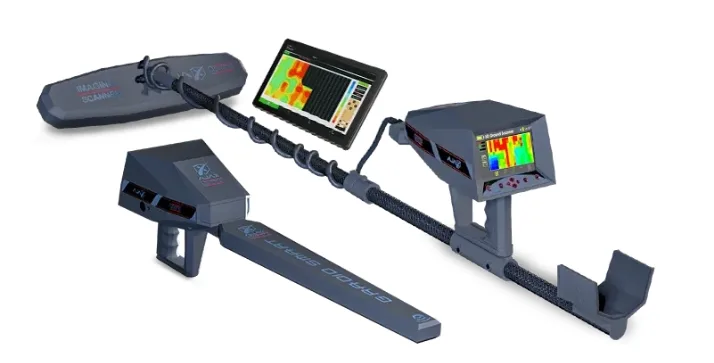How to Choose the Best Gold Detector for Your Prospecting Adventures
Venturing into gold prospecting is more than a hobby—it’s an exciting journey filled with the promise of discovery and potential reward. Whether you’re trekking through riverbeds, scouring desert terrain, or exploring old mining grounds, the key to a successful expedition begins with choosing the right gold detector. With the technology evolving rapidly, the market is flooded with options, each boasting a unique set of features. But not all detectors are created equal, and understanding which one suits your prospecting style can make all the difference between striking gold or going home empty-handed.
The decision can feel overwhelming for beginners and even seasoned hobbyists alike. From pulse induction to VLF technology, depth range to ground balancing, every detector caters to specific environments and user expertise. That’s why taking a little time to research the key elements of a quality gold detector is essential. In this article, we’ll guide you through the most important factors to consider so you can make an informed investment in your gold-hunting future.
Understanding the Technology Behind Gold Detectors
To choose the right detector, you must first understand the two core technologies: Very Low Frequency (VLF) and Pulse Induction (PI). VLF detectors operate with high sensitivity to small gold nuggets and work well in shallow ground with minimal mineral interference. They’re perfect for beginners or those exploring moderately mineralized soils. PI detectors, on the other hand, penetrate deeper ground and handle highly mineralized environments with ease, making them ideal for advanced users or harsh terrains.
Each type of gold detector has strengths tailored to specific locations and purposes. If you’re primarily working in riverbeds or lightly mineralized ground, a VLF model may be your best bet. However, for serious prospectors operating in volcanic or iron-rich areas, a PI system offers better performance and depth detection. By identifying the environment in which you plan to hunt, you can align your detector’s technology with your needs.
Consider the Type and Size of Gold You’re Targeting
Different detectors are optimized for different sizes and depths of gold. If your goal is to find fine flakes or small nuggets, sensitivity is a top priority. VLF detectors shine in this category, especially when paired with small coils that help isolate tiny targets in cluttered soil. For larger gold pieces buried deeper underground, PI detectors with larger coils provide better reach and discrimination.
Your ideal gold detector should be capable of adjusting sensitivity and threshold settings to match the target size. Some models allow fine-tuning that gives the user a distinct edge in complex terrains. It’s not just about going deeper; it’s about accurately identifying what lies beneath the surface. Balancing these capabilities will lead to more successful prospecting sessions and reduce time wasted digging up trash metal.
Evaluating Ground Balancing and Mineralization Handling
One of the most common challenges in gold prospecting is dealing with ground mineralization, which can interfere with signal clarity and lead to false readings. A good gold detector must feature automatic or manual ground balancing settings that allow it to adjust to the mineral content of the soil.
Advanced detectors incorporate adaptive ground tracking systems that make real-time corrections based on the terrain. This is especially important when moving across varied landscapes, such as transitioning from dry rocky ground to damp riverbeds. If your gold detector can’t adapt to these changes, your chances of accurate detection drop significantly. It’s worth investing in a model that offers superior mineral rejection features to reduce frustration and increase productivity.
Coil Size and Configuration Matter More Than You Think
The coil is the interface between your detector and the ground, and its size and type greatly affect your results. Concentric coils are generally more precise and offer better depth, while double-D coils handle mineralized ground more effectively and provide wider coverage. For narrow creeks or rocky areas, a smaller coil offers precision, while larger coils cover more ground quickly and are suitable for open fields or deserts.
Choosing the right coil can redefine your success in the field. While most gold detectors come with a standard coil, many models support interchangeable coils to tailor your device for different tasks. Investing in a unit with coil versatility gives you the flexibility to adapt to any environment without needing a completely new detector for each condition.
Importance of Discrimination and Audio Tones
Gold isn’t the only metal underground, so your detector must be able to differentiate between valuable targets and junk. Discrimination settings allow the user to filter out unwanted metals like iron or aluminum. The more advanced the detector, the more customizable these settings become, helping you avoid digging for bottle caps when you’re really after treasure.
Audio tones are just as critical in making informed digging decisions. A quality gold detector uses distinct audio cues for various metal types and depths, giving you a second level of verification before you start to dig. Some detectors also come with adjustable tone pitch and volume settings for user comfort and precision, especially helpful when prospecting in windy or noisy environments.
Portability, Weight, and Battery Life
Gold prospecting often involves long hours of walking, hiking, or climbing over challenging terrain. This makes the weight and ergonomics of your detector a crucial consideration. A lightweight model with an adjustable shaft and padded armrest can significantly reduce fatigue and improve your efficiency over time.
Battery life is another essential factor. Most modern gold detectors come with rechargeable lithium batteries or AA battery packs that provide 8 to 20 hours of continuous use. Some even include backup power solutions or solar-compatible chargers for extended fieldwork. The ability to operate all day without frequent interruptions is key to covering more ground and increasing your chances of striking gold.
Value for Money and Brand Reputation
While the price tag often reflects quality, the most expensive detector isn’t always the best one for your needs. It’s crucial to find a model that offers a balance between features, durability, and cost. Established brands often provide better customer support, warranty coverage, and long-term reliability, making them a safer investment for serious users.
Don’t overlook newer models from reputable brands either. These often incorporate the latest advancements in sensitivity, depth, and discrimination without the premium pricing. Reading reviews and comparing specifications from trusted sources can help you assess which gold detector offers the best value for your budget and requirements.
The Role of Accessories in Enhancing Performance
While the detector is the core of your setup, accessories such as headphones, digging tools, and carrying cases can enhance your experience significantly. High-quality headphones improve your ability to hear subtle tones, especially in noisy environments. A rugged, comfortable harness reduces arm fatigue and makes long expeditions more manageable.
Some detectors are bundled with starter kits, while others require accessories to be purchased separately. Consider investing in weather-resistant gear and tools designed for specific terrains you’ll be working in. A well-equipped prospector is not only more effective but also safer and more efficient in the field.
Making the Right Investment for Your Prospecting Goals
Selecting the perfect gold detector is a personal decision that hinges on where you’ll be prospecting, your experience level, and what types of gold you’re targeting. By understanding how different technologies, features, and design choices affect performance, you can make an informed choice that maximizes your success and satisfaction.
Your detector is more than just a tool—it’s your partner in the pursuit of discovery. With the right one by your side, every signal becomes a possibility, every expedition a chance to uncover something extraordinary. Take your time, do your research, and equip yourself with the best gear for your gold-hunting journey.





